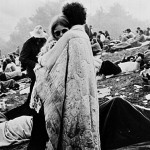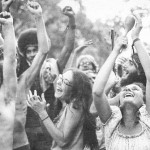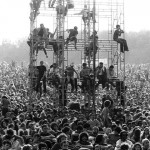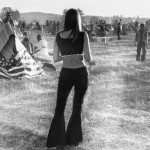Sex, drugs and second hand
One of the most influence subcultures – Hippie or the flower children. Their movement swept the planet in the 1960’s by challenging the traditional values that had been passed down, the Hippies changed culture.
How did the world peace movement come about?
- Young people in the late 1950’s and 1960’s protested against the conservatism and puritanism that characterized both British and American society.
- The full-scale US intervention in the Vietnam War in 1965 and the unwillingness of young people to die in the overseas jungle for values they did not share.
- The Hippie subculture was the answer to the ultimate American dream: a good job, your own house, a couple of cars, a couple of kids and going to church on Sundays.
The fashion and culture of the first half of the decade was little different from that of the 1950’s: women still wore laconic fitted dresses and men wore suits with a classic cut. Everything changed in 1967 when fringe movements came out of the underground and literally took over the world.
Beginning in the mid-1960’s, members of America’s creative elite began to gather in informal communes where they experimented with psychotropic substances, listened to progressive music and discussed esoteric and philosophical texts.
Merry Pranksters
One of the first and most famous communes of this time was the Merry Pranksters, founded by journalist and author Ken Kesey.
The Pranksters became a link between generations, trendsetters of a bright new fashion and, at the same time, the main popularizers of LSD in America. The thing is that at the time when Ken Kesey was studying at the university, the CIA was conducting tests of the then little-known psychotropic substance, which had never before gone beyond a narrow circle of scientists. The future writer volunteered, and later introduced other „pranksters” to the psychedelic, who shared their impressions with friends and thus increased the demand for the substance.
Among other things, they were the first to paint their buses and outfits massively in rainbow colors, which would not go out of fashion until the end of the 1970’s. The commune members were also into ethnic drawings of Native Americans, Oriental philosophy and preaching world peace – an ideology that was visually reflected in the clothes of Hippies.
Two members of the commune opened the first boutique in the States, which sold exclusively „progressive” outfits in „folk” style, jewellery with pacifist slogans and accessories stylised as exotic.
Hippie&Music
The Hippie subculture could not help but influence fashion, as the most popular musicians of the 1960s were close to it: John Lennon, The Beatles, Jimmy Hendrix and others.
Members of the subculture more often wore deliberately androgynous clothing, claiming gender was an idea imposed by modern society. Both men and women wore loose-fitting jeans and shirts made from the simplest possible fabric. Unlike their mothers and older sisters who emphasised femininity with flamboyant make-up, hippie girls often wore no make-up at all, trying to be as natural as possible. Both men and women grew their hair long and their hairstyles were uncomplicated, with popular styles including braids and straight hair. Another important step in the fight against the contrived rules of ‚civilised’ society was the rejection of bras – many girls thus defended the right not to alter their figure depending on fickle ideals of beauty.
Hippie&Feminism
Naturally, the drive to assert women’s rights was also influenced by the second wave of feminism and the sexual revolution, which was in full swing in the late 1960’s. The year 1966 saw the publication of the famous scientific work of the researchers Masters and Johnson, which, for the first time, seriously examined the individual physiological responses to sexual arousal and refuted the myth of the allegedly innate asexuality of women. European film stars like Brigitte Bardot, who were not afraid to be overly revealing and who were nothing like the role models of the dainty Jackie Kennedy or the elegant Audrey Hepburn, also contributed to this.
WOODSTOCK – 1969
Four days America will never forget.
A record 500,000 people attended. The four days at Max Yasgur’s Dairy Farm were a feast of peace, love and music, briefly turning everyone into one big family. nothing could ruin the fantastic atmosphere of the festival: people were willing to stand in kilometre-long traffic jams to get to the farm, knocking down fences to allow free passage and sharing food with each other by setting up field kitchens. „Woodstock was a real sensation at the time. Within nine months of its conclusion about 200 000 children born out of wedlock were born. It was the beginning of the sexual revolution and the end of the „hippie era”.
The grey crowd turned into a colorful crowd
The main driver of style was the desire to distinguish themselves from the crowd in mass-produced clothes of similar styles. Instead of helping big corporations, hippies bought clothes in second hand shops or tried to produce them themselves. Unfortunately, in the early 1970’s, the Hippies’ worst nightmare came true: clothes adorned with ethnic prints and psychedelic designs became part of mass culture. They began to be made by the very big companies against which the protest was directed.
The influence of the subculture today
Hippies are forever in history with their music, philosophy, mood and style. In one way or another they are firmly rooted in the history of fashion and in one way or another there will always be some element of the Hippie style with us, no matter if it’s a bandana, a bracelet, a tie-dye, or psychedelic prints. There will always be something we can borrow from the hippie style and incorporate it into our everyday look. Hippies are a vivid mark on the history of fashion, and we all know that fashion is cyclical.





